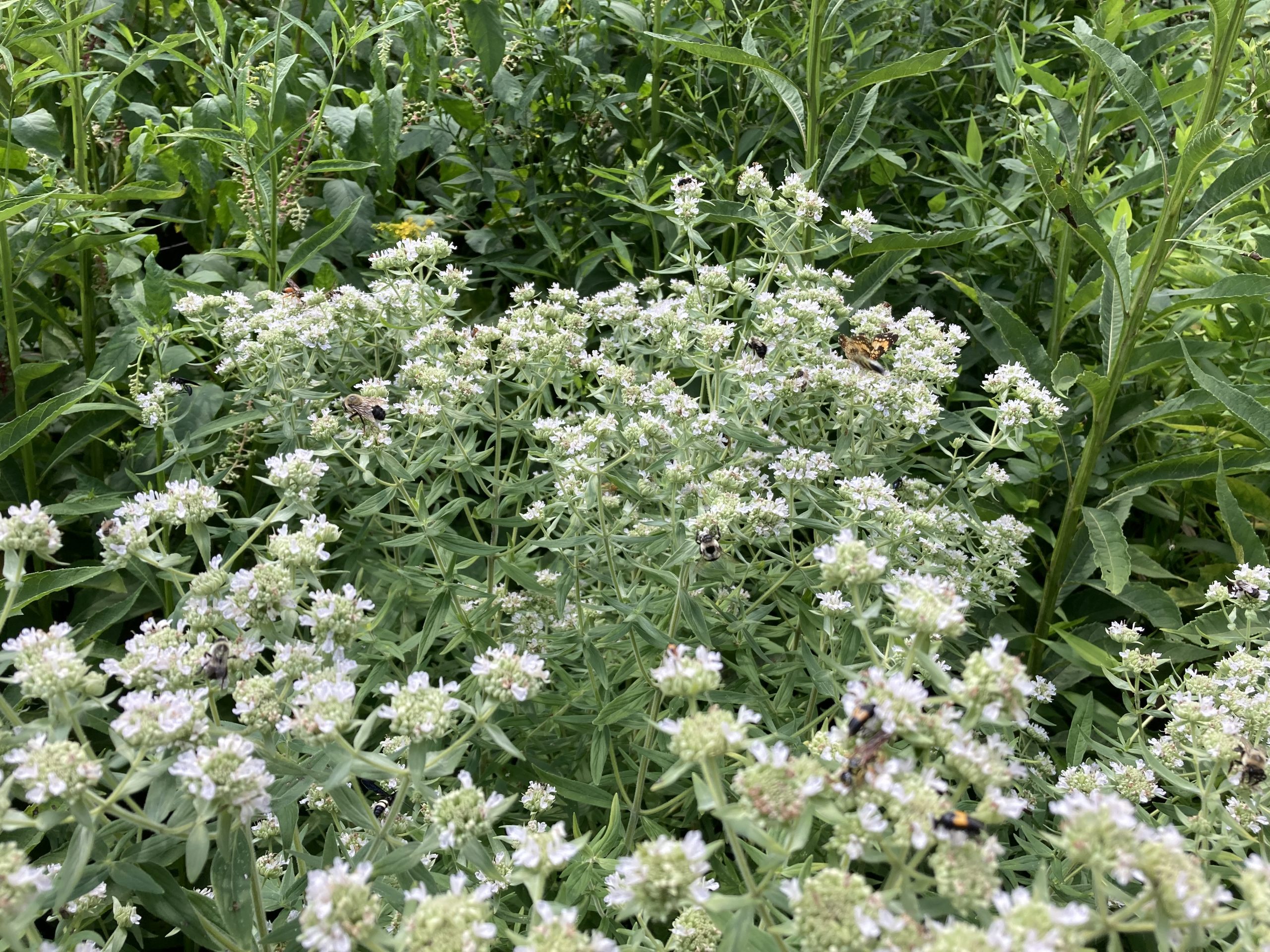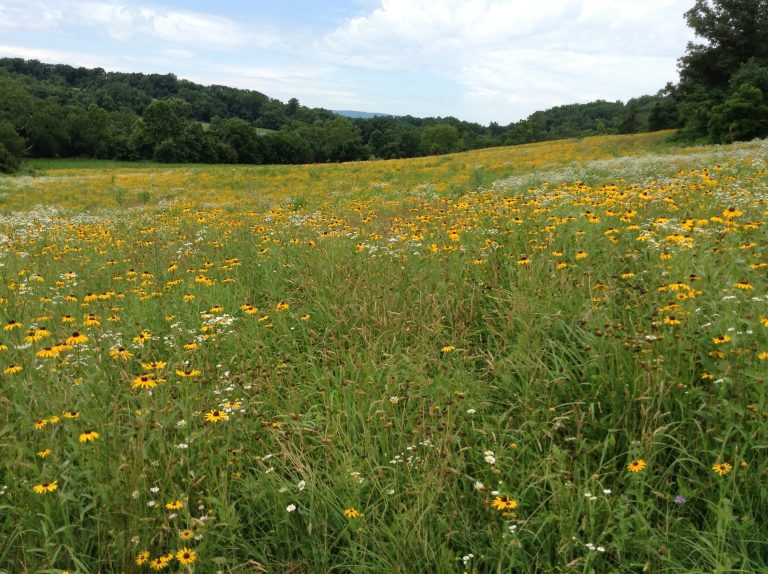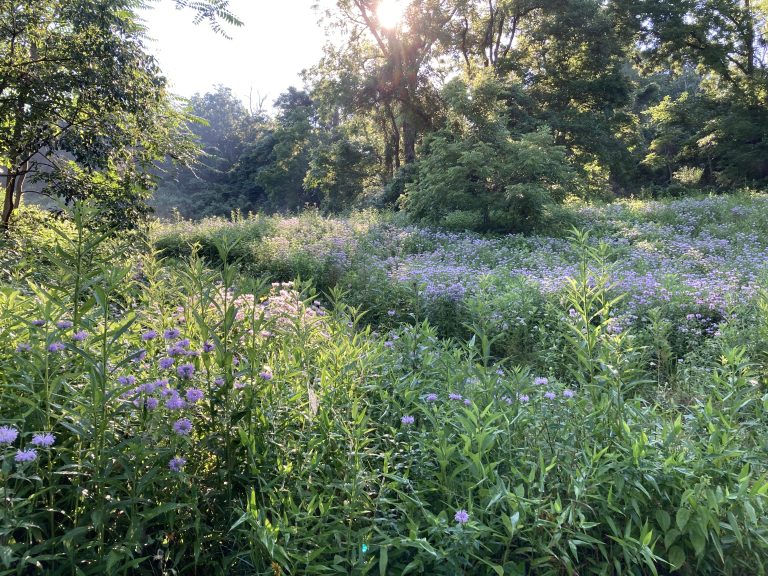Pollinator meadow
Spring: bumblebees in penstemon



Then Nature took over. With the original fescue cover gone, the underlying seedbank was unlocked, and a number of species that were not seeded appeared along with those that were. Some of the plants in the seedbank were desirable (such as andropogon virginicus and purpletop tridens), some were not (autumn olive, coralberry, Japanese honeysuckle, multiflora rose, and mile-a-minute vine), and the jury is out on still others (wingstem and crownbeard, closely-related aggressive native plants that pollinators love and provide good structure for birds but shade out other plants; and blackberries, also aggressive but good cover for birds and forage for wildlife). The first summer, the meadow looked bad: the desirable plants that were seeded in the field were taking time to get established, and the undesirable plants were abundant.
At the recommendation of NRCS, the meadow was bushhogged in early 2015. Starting that year, it began to look better: coreopsis and daisies in the early spring; monarda, black-eyed susans, milkweed, and butterfly weed in the summer; ironweed and goldenrod in the autumn. A management program was established that, for the first few years, involved burning half the meadow each winter to control unwanted plants and eliminate the duff that might otherwise accumulate over the years and smother desirable plants. The other half of the field was left for winter forage and cover for wildlife. Observations made in the first few years suggested the meadow was doing what it was supposed to do: attracting birds and pollinators, providing forage and cover, and significantly increasing botanical biodiversity see the results of a 2015 survey of plant, pollinator, and bird diversity.
The meadow was the focus of an internet buzz when a rare species of bumblebee, bombus pensylvanicus, was detected, and a winter bird survey conducted by VWL director Amy Johnson revealed that it was having a significant positive impact on populations of overwintering birds, with substantially more individuals of more species detected in the pollinator meadow than in nearby fescue hay pastures.
Early autumn: tiger swallowtails in field thistle

















